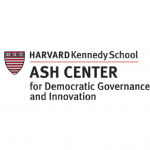Like lots of kindergarteners, Debra Lane-Hayes had a big idea about what she wanted to be when she grew up: a dentist.
Now 16 years old, Lane-Hayes still has the same dream — and she’s on pace to achieve it years ahead of schedule.
Not even old enough to see an R-rated movie, last spring Lane-Hayes graduated from high school with more than two years of college credits already on her transcript, at no cost to her family. She’s currently on track to graduate from the University of Alaska Anchorage with a bachelor’s degree in biological sciences when she’s 18 — the age when most students are earning their high school diplomas.
And believe it or not, she’s far from alone. Lane-Hayes and her classmates at the Alaska Native Science & Engineering Program’s Acceleration Academy finished high school having completed an average of 40 college credits, or about one-third of the credit hours needed for a bachelor’s degree. The full-time high school program offers students the opportunity to go from eighth grade to college graduation in five years or less.
“Sometimes it’s crazy, because I have all these ideas of things I want to accomplish in life,” said Lane-Hayes, who is Inupiaq. Her accelerated course of study has given her a head start on those goals, she added: “It’s shaving off at least four years, minimum.”
A community of learners
Established in 1995 to put Alaska Native students on the path to careers in science and engineering, ANSEP provides opportunities to more than 2,500 students from middle school through college. The full-time Acceleration Academy programs available to high school students in Anchorage and the Mat-Su area take the place of traditional high school, with students earning their high school diplomas and college credit at the same time.
“Students are working together in a community and taking college courses in high school, and there’s no need for remediation,” said ANSEP Senior Director for Acceleration Components Michael Ulroan. “It’s reducing costs for the student, their family, and the State of Alaska. And we’re literally just getting started.”
Acceleration Academy launched in the Mat-Su in 2015 with 22 students. This year, more than 80 students are enrolled in the full-time Anchorage and Mat-Su academies, more than 90 students statewide participated in the annual summer program, and ANSEP has its eye on new regions, with plans for a Bethel academy already in the works.
“We want every single student to have the opportunity to take these courses through the university as high school students,” Ulroan said.
While Ulroan has headed the Acceleration Academy programs since the first one opened in 2015, his connection to ANSEP dates back to his own college days. After graduating from the top of his graduating class in the rural community of Chevak, Ulroan, who is Cup’ik, enrolled at UAA to study engineering. Despite having aced the advanced classes he took in high school, as a college freshman he tested into remedial math and English classes.
“I thought that was normal, because I didn’t really have anything else to compare it to,” Ulroan said. “All of my other classmates and friends from other villages were also in the same classes.”
Not only was Ulroan placed in those pre-college-level courses, he failed them — multiple times. Even with the support and community of his fellow ANSEP students, he ended up taking eight years to finish his bachelor’s degree in engineering.
“There were a lot of obstacles,” Ulroan said. “I didn’t realize that I was academically and socially unprepared for being in college. I had to wait several years before I could start taking engineering courses. That was frustrating.”
While lack of preparation has an emotional cost for students like Ulroan, it also has a financial cost, both to students and to the university system.
“When students go through what I went through, the state pays twice for that student to take the same thing,” Ulroan said. Acceleration Academy is funded through ANSEP, its community partners (including private businesses, philanthropic organizations and Alaska Native corporations), and the students’ local school districts, whose participation is critical to the program’s success.
“It’s a shared investment in the students’ futures,” Ulroan said. Starting with this year’s graduating class, the average number of credits earned will jump to 70, or more than two years of a four-year degree. The average cost savings per full-time graduating student comes to a total of approximately $50,000 to the student and their family and $25,000 to the state.
Lucas Fisher, who just turned 20, will graduate from UAA in the spring with a Bachelor of Science degree in mathematics, becoming Acceleration Academy’s first alumnus to go from eighth grade to college graduate within six years. The tuition-free high school program provided academic enrichment that Fisher said he wouldn’t have been able to access otherwise.
“I couldn’t really find any opportunities as a freshman in high school without having some financial component to it that would block me from entering it,” Fisher said. “To me, it felt very fair compared to other opportunities.”
Fisher, a member of the Agdaagux Tribe of King Cove, estimates that he has saved $40,000 in university tuition and living expenses while having the time and support to immerse himself in every aspect of his undergraduate experience.
“I could branch off from my academics enough to where I was both developed socially and academically,” said Fisher, who is in the process of applying to postgraduate programs in theoretical mathematics. “I know that, socially, I’m much better off.”
A passion, a path, a career
Technically Alexandria Burks-Dakutak, who just turned 17, should be in her junior year of high school. Instead, the Acceleration Academy student has been approved for early graduation, with most of her undergraduate prerequisite courses already completed.
“She’s always been very much a go-getter,” mom Brandy Burks said. “She likes to do new things, spread her wings out and do as much as she can.”
Whether her daughter has needed supplies or become interested in a new career path, Burks said, assistance has been just a phone call or email away.
“The next thing you know, they’re finding that course for her to take,” Brandy said. “She said she wanted to go in a certain direction, and they found a way to help her in that direction.”
There’s no cost for the college credits Acceleration Academy students earn during high school, and if they continue on to the University of Alaska, ANSEP helps with their undergraduate tuition as well through the ANSEP University Success component.
As the parent of three children, Burks said, the tuition benefit is “amazing.”
“College isn’t something that’s a small expense, especially if you want them to be able to reach for the stars,” she said. “It’s a commitment for her, which is a good thing for teenagers to have, but at the same time, a huge weight has been lifted.”
Burks-Dakutak estimates she’ll graduate from college by age 19 or 20 and pursue a career in psychology or human services — but first, she’d like to travel.
“I feel like graduating earlier gives me more time to do all that stuff,” she said.
An environment of encouragement
If Acceleration Academy students are headed out into the working world at a young age, they’re not doing it unprepared. The program incorporates plentiful opportunities for public speaking, networking and interacting with professionals, so students learn to be confident in introducing themselves, asking good questions, and networking.
“I think ANSEP prepares us well to be composed in a professional setting,” Lane-Hayes said.
Events regularly feature ANSEP alumni and representatives from partner organizations who come to talk about their careers in science, technology, engineering and math-related fields. Keynote speakers at the annual Celebration event have included astronauts Buzz Aldrin and Dr. Bernard Harris Jr. and quantum physicist Dr. Michio Kaku, who co-authored the first academic papers about string field theory.
“These kids get the chance to actually talk to this person,” Burks said. “It kind of inspires them.”
Students say that a sense of inspiration, guidance and opportunity is an important part of their experience.
“It’s the environment, the people you’re surrounded with,” said Jessica Martinez, 16, who enrolled in Acceleration Academy this fall after participating in summer programs for several years. “I’ve had great experiences with friends and mentors in ANSEP. They really do want you to succeed.”
As a result, she added, she knows her confidence has increased significantly.
“A few years ago, I wouldn’t be able to do this interview with you, because I would be too shy to talk,” Martinez said.
Finish the drill
At the rate she’s going, Lane-Hayes could graduate from college at 18, but she’s also thinking about slowing her pace and graduating at 19 “just to give me a breather.”
Even if she takes that extra time, she expects that she’ll be licensed to practice dentistry by the time she’s 22 or 23.
“I think my biggest fear is that my classmates in dental school or the administration or teachers won’t accept me or treat me as equal because of my age,” Lane-Hayes said.
They’d be foolish to underestimate her.
As a child, Lane-Hayes experienced medical issues including extreme hair loss, eczema, asthma and allergies that severely limited her diet and mobility. Even today, sensitivity to certain types of weather can keep her stuck inside. But Lane-Hayes lives by a sentiment expressed by musician and writer Henry Rollins: “Strength is the product of struggle.”
“When you are born with those types of medical issues, it just gives you a type of hunger to want to succeed and make sure you can help anybody else who’s going through a similar type of struggle,” Lane-Hayes said.
Her dad, Colin Hayes, is a huge University of Georgia Bulldogs fan, and when Lane-Hayes was in fourth grade, she wrote a letter to the football team’s then-coach, Mark Richt — who wrote her back.
“He told me that I had a very ‘finish-the-drill’ attitude, which is what he told his players,” Lane-Hayes said. That philosophy has continued to motivate her as she tackles her lightning pace through high school and college: “I always tell myself, ‘You have to finish the drill no matter what.’”
That’s one of the things that distinguishes Acceleration Academy, Ulroan said — it’s designed to foster success for all students, regardless of their academic strengths, their racial or cultural background, or whether or not they’re already pursuing an accelerated course of study. This fall, Acceleration Academy students had an 85 percent course completion rate.
“These students — and really any student — they’re all capable of getting into and working in their desired profession and having a degree under their belts at an early age,” Ulroan said. “We cannot put a ceiling at all on these students and their possibilities.”
This story was originally published in the Anchorage Daily News.
Since 1995, the Alaska Native Science & Engineering Program has helped set thousands of Alaska students on a career path to leadership by providing inspiration, guidance and opportunity. Through the full-time Acceleration Academy, students and their families can save $75,000 or more in college costs by earning two years or more worth of college credits. Additionally, by eliminating remediation, students save money and the social cost of failure is reduced, while the State of Alaska saves about $37,000 per full-time Acceleration Academy graduate. Since its inception in 2015, full-time Acceleration Academy students have completed more than 3,000 college credits, collectively.



